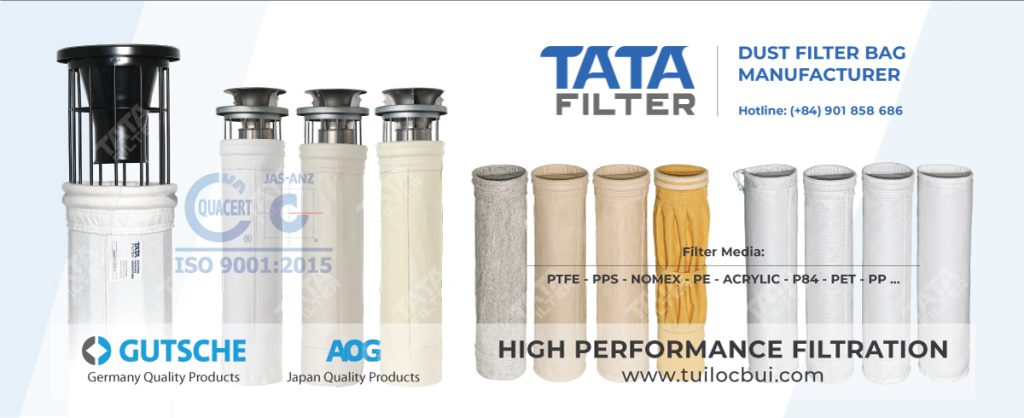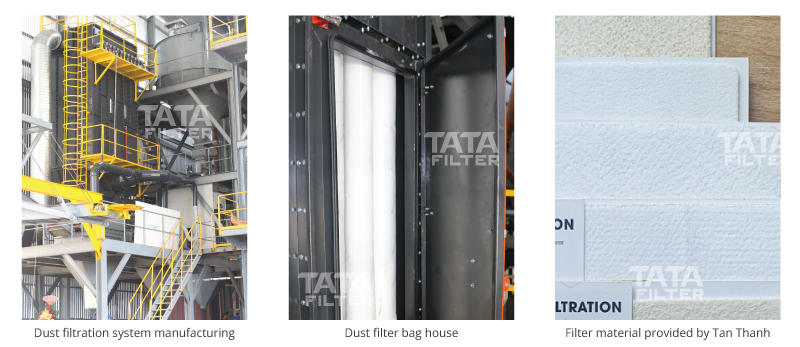Toxic waste dust for the environment comes from the process of burning fuel in production. The effective collection and treatment of waste dust to ensure the cleaning of exhaust gases before discharging into the environment is our priority concern for the achievement of sustainable and environmentally friendly development. For enterprises, selecting filter materials for incinerator exhaust gas treatment with high-performance and guarantee the system safety are crucial for long-term development.
Thanh Bình
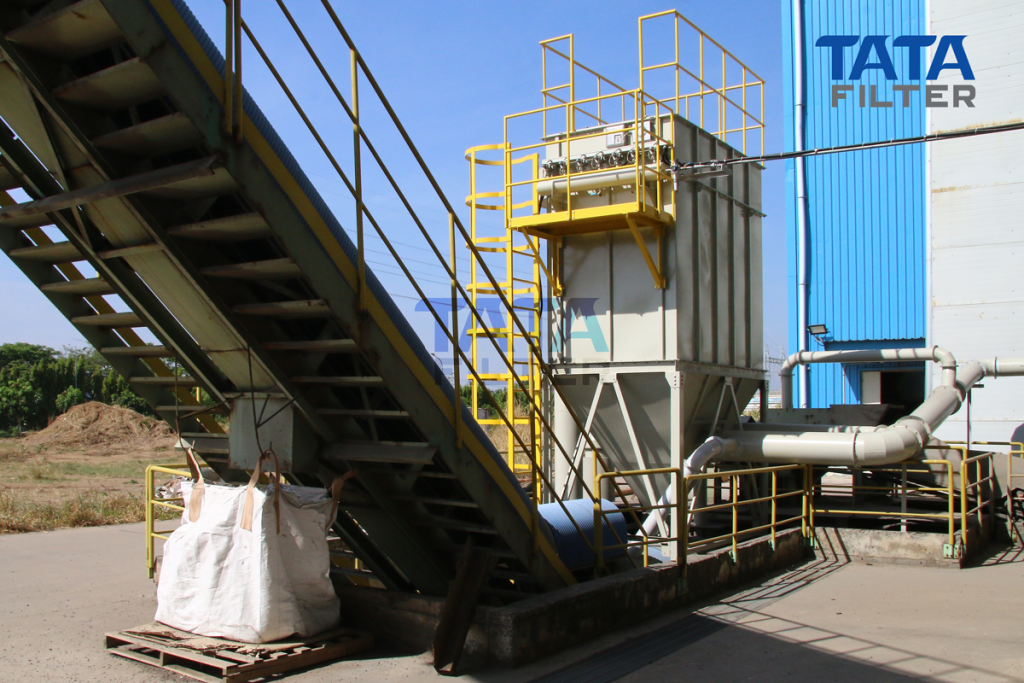
The Importance of Selecting Filter Materials for Incinerator Exhaust Gas Treatment
The selection should be based on the specific type of exhaust gas and the technical requirements of the exhaust gas treatment system. For the cloth bag dust filtration method, the use of filter materials for the incinerator is the most important factor to improve the dust filtration performance before discharging into the environment. The high-quality filter material not only affects the service life of the system, but also saves maintenance costs, minimizes the risk of damage and dust loss, and ensures the continuous and stable operation of the system.
Factors Influencing the selection
There are many applications of incinerators in production and daily activities, but they can be divided into the following important industries and applications:
– Waste incinerators at waste treatment plants.
– Incinerators generate electricity from domestic waste, recycled products from garbage (RDF: parts from combustible garbage, waste paper, waste wood, waste oil, sludge from wastewater treatment systems,…).
– Coal-fired power plants.
– Incinerators in the steel, metallurgy, cement industry (arc furnaces, smelting furnaces, …).
The nature of gases from combustion fuel is very complicated and toxic to the environment, creating many risks affecting the efficiency of filter materials, so when choosing dust filter materials by cloth bag system, it is essencial to have knowledge about the main factors as follows:
1. Temperature and operating conditions
– The exhaust gas temperature after the combustion process is high which affects the choice of filter material.
– Environmental conditions are also considered for resistance to corrosion and suitable for the chemicals contained in the exhaust gas.
– Humidity causes the risk of hydrolysis of the filter material (Hydrolysis). Filter bags with special treatment technology can increase moisture resistance and hydrolysis.
– Oxygen concentration in exhaust gas affects the filter material (Oxidation potential). Normally, the dust filtration system operates at an oxygen level of 8-10%.
– Exhaust gas concentration is acidic, alkaline components affect the filter material (Acidic /Alkaline components – Acid dew point).
– Combined methods such as Cyclone, absorption, adsorption, heat reduction, and explosion protection.
– With toxic gas, it is necessary to use catalyst treatment.
– With the environment with charged dust, the filter material should have anti-static treatment.
Reference: Graph of filter materials and chemical resistance levels
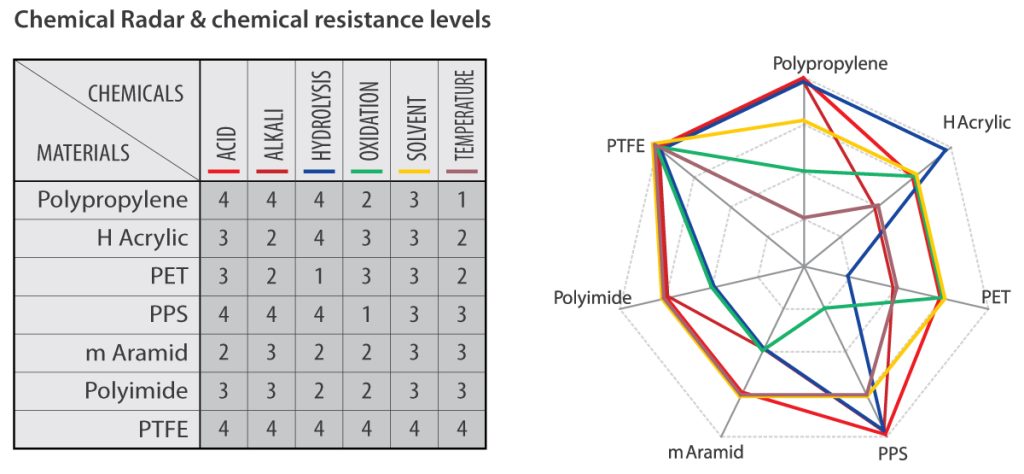
2. Dust properties and filtration output
– Requirements for output emission standards: dust concentration limitation, exhaust gas concentration,…
– Understand the properties of dust in exhaust gas to select right filter materials. Dust can be of different sizes and properties, so the filter material needs to meet the requirements to handle that type of dust.
– The filter material must ensure that the filtration efficiency is high enough to remove dust and impurities from the exhaust gas.
Reference: Standards for Filter Materials.
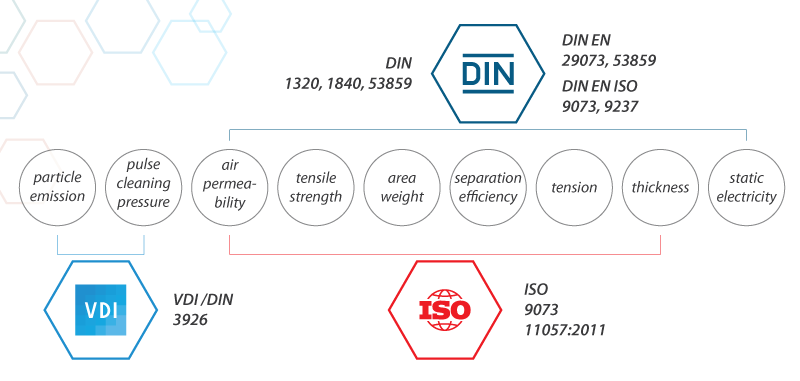
There are many organizations that can test the quality of filter material, the leading ones are:
- ISO – The International Organization for Standardization
- DIN – Deutsches Institut für Normung
- VDI – Verein Deutscher Ingenieure
- FDA – Food and Drug Administration
3. Dust filter bag structure
Industrial dust filter bags are usually made from specialized filter cloth and have support cages. It is necessary to check the structure of the filter bag to ensure quality and durability.
The durability of the dust filter bag and support frame is measured by the number of vibrations or the time in months of use, calculated according to the system design, the desired material life, and the maintenance and replacement plan,…
Sample of dust filter bags manufactured by Tan Thanh (to replace imported products):
TATA Filter high-performance dust filter bags. Graphics: TATA Filter.
Depending on the temperature, you can choose the right filter fabrics:
– Low, under 150°C: Polyester, PP, Acrylic fabrics.
– Medium, from 150°C to 220°C: PPS, Nomex /AR (m-Aramid) fabrics.
– High, above 220°C to 280°C: Performance materials that are highly temperature resistant, durable, and have good dust filtration are required. Heat-resistant fabrics include fiberglass, P-84, Nomex, and PTFE.
Types of filter materials commonly used for incinerators: PPS (Polyphenylene sulfide), Nomex /AR (m-Aramide), PI (Polyimide), PTFE (Polytetrafluoroethylene). PTFE fiber material is resistant to very high temperatures up to 260°C and excellent resistance to chemical impacts.
Reference: Scale of the heat resistance level and chemical conditions for the filter material.
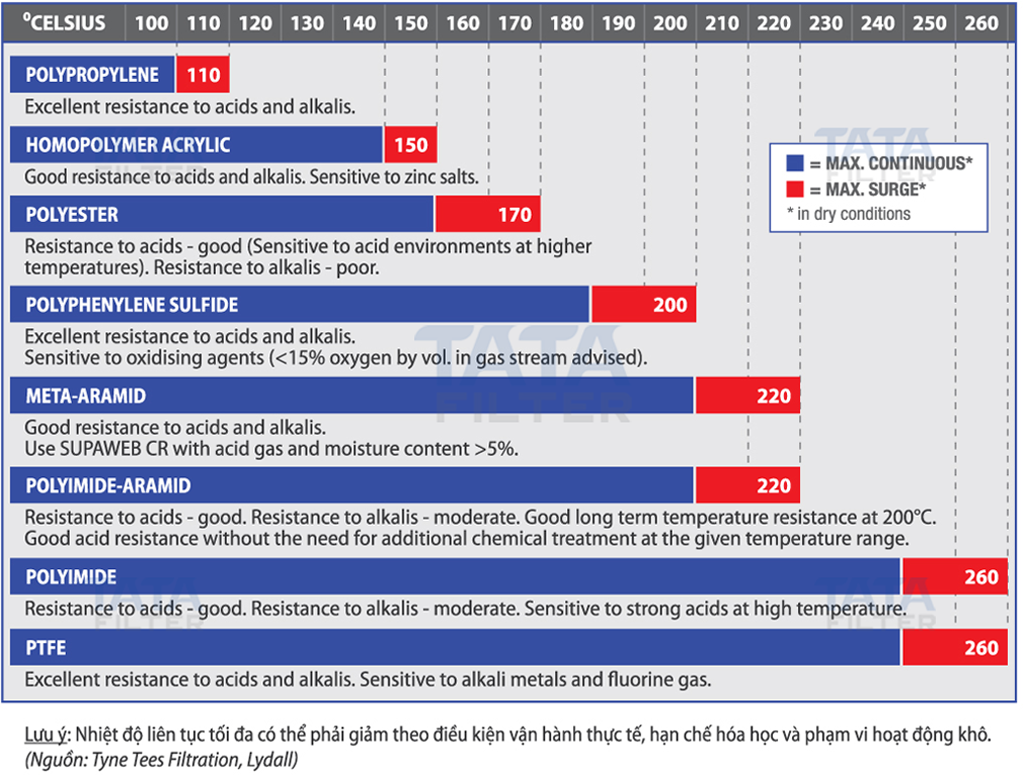
Notes: Temperature in dry conditions. The permissible operating temperature may have to be reduced according to actual operating conditions, chemical impacts, humidity,…
The above factors are closely related to each other, the coordination between the factors of emission properties, environmental properties operating in the dust filtration system will form operating conditions that destroy the filter material. Grasping the above characteristics, we can choose the right material and design the right dust filter system (bags house), minimizing the factors that cause damage to the filter material.
Key Factors to Consider When Designing Dust Filtration Systems for Incinerators
– The application of incinerators whose composition of the inlet is from combustion fuel.
– The filter material structure affects the parameters of the dust filtration system (Type of material – filtration velocity – filtration area – flow).
– The relationship between the quantities of dust /exhaust gas concentration – Temperature – Humidity determines the structure of the dust filter tank, operating temperatures in the dust filter tank, design elements that ensure the longest service life for filter bags, methods of controlling the above quantities in many situations.
– The size of the dust filter bag affects the size of the filter system, and the structure of the supporting parts of the filter bag.
– The cleaning method of the filter bag, the specifications of the filter bag cleaning system, and the filter tank structure will optimize the cleaning ability of the filter bag.
Outstanding of Tan Thanh’s filtration materials
Tan Thanh continues Dat Tin, with a history of operation from 2010 to now, is becoming the leading manufacturer of industrial dust filter bags in the Vietnamese market. Tan Thanh has a wealth of experience in selecting filter materials, always at the top of the trends, improving materials for furnace dust filters, towards improving the quality of filter products. Tan Thanh’s strengths are also the benefits customers get when using Tan Thanh’s products:
– Technical consulting, renovation and upgrading of dust filtration systems.
– Consulting and technical support services related to the selection of filter materials suitable for the application used.
– Producing dust filter bags for incinerators using filter materials of leading brands: GUTSCHE (Germany), AOG (India – Japan),… with the most advanced patented technologies, meeting the most stringent requirements according to leading European and international standards.
– The analysis of filter materials helps to find causes and solutions to the problem of inefficient filter materials.
Production Facility
Producing dust filter bags at Tan Thanh Filtration Company:
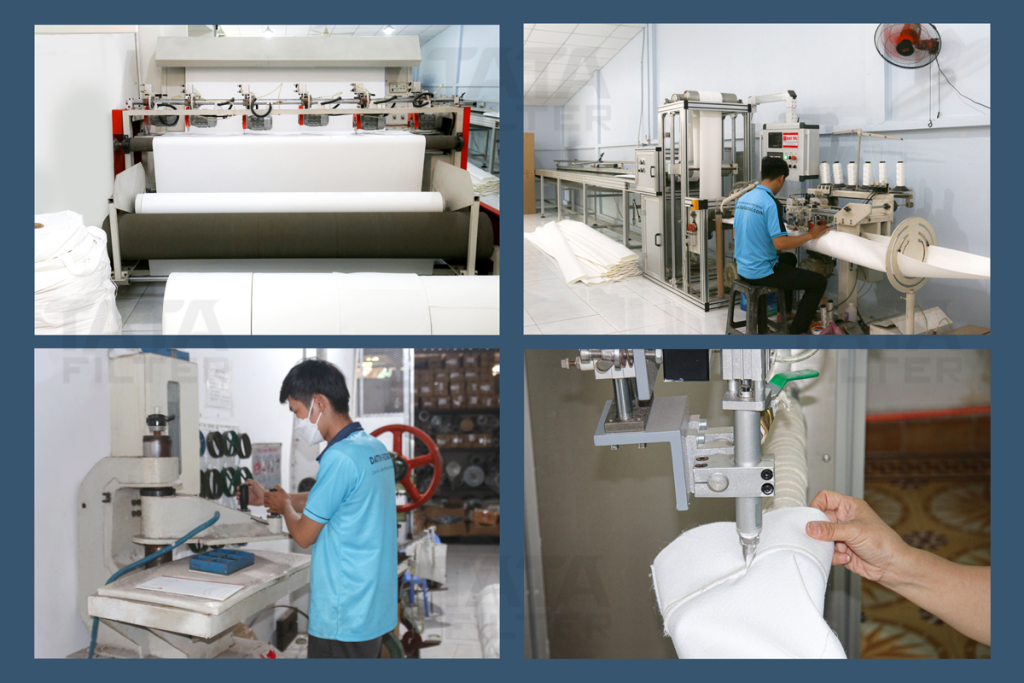
Case Study
Dust filter bags use Gutsche’s PTFE filter material at a pulp mill in BiocellPascov, Czech Republic.

Contact TATA FILTER
Tan Thanh Filtration Company Ltd.
Hotline: 0901858686
Direct contact to our technical person:
Ks. Pham Thanh Binh (Mr.)
Phone: 0919823239
Email: thanhbinh@tatafilter.com
Note: Please contact us directly for approriate consultancy. Any form of reproduction of the content or images of this article must have the written consent of Tan Thanh Filtration Company.

